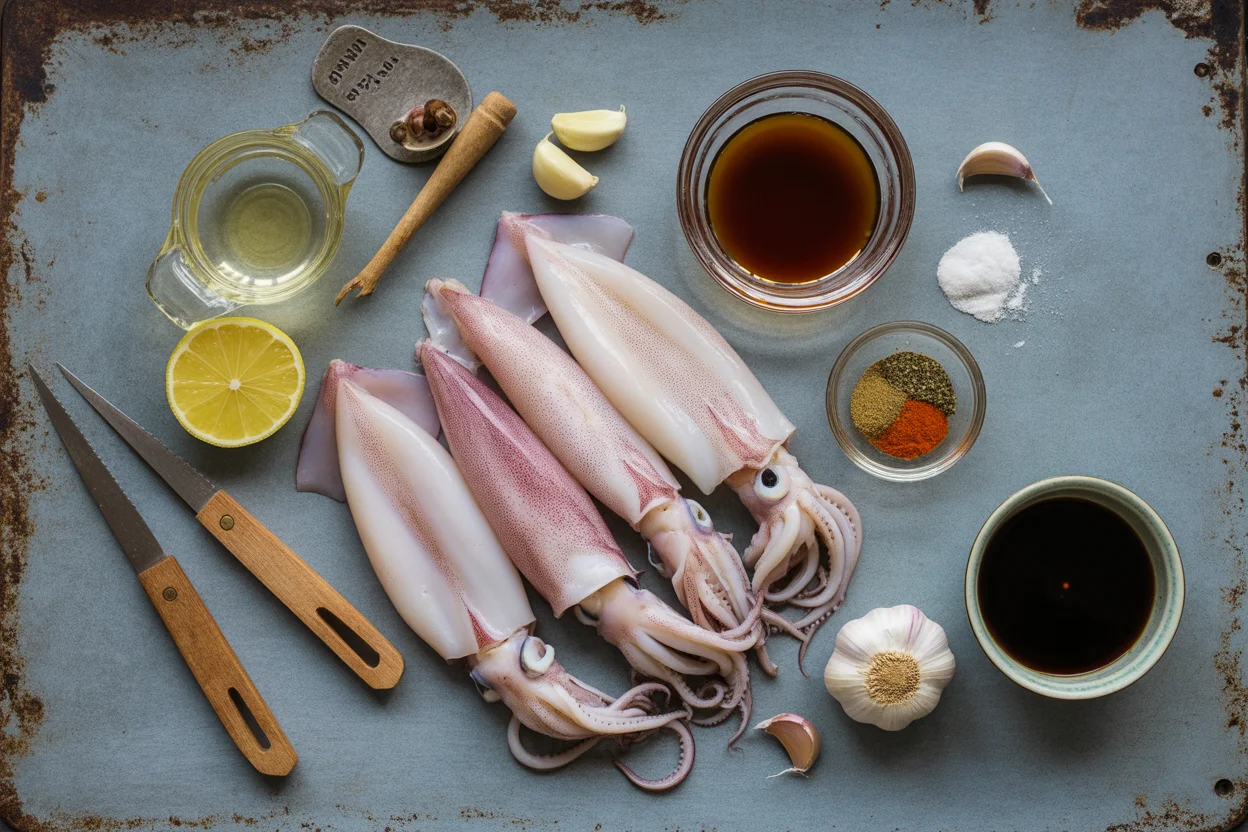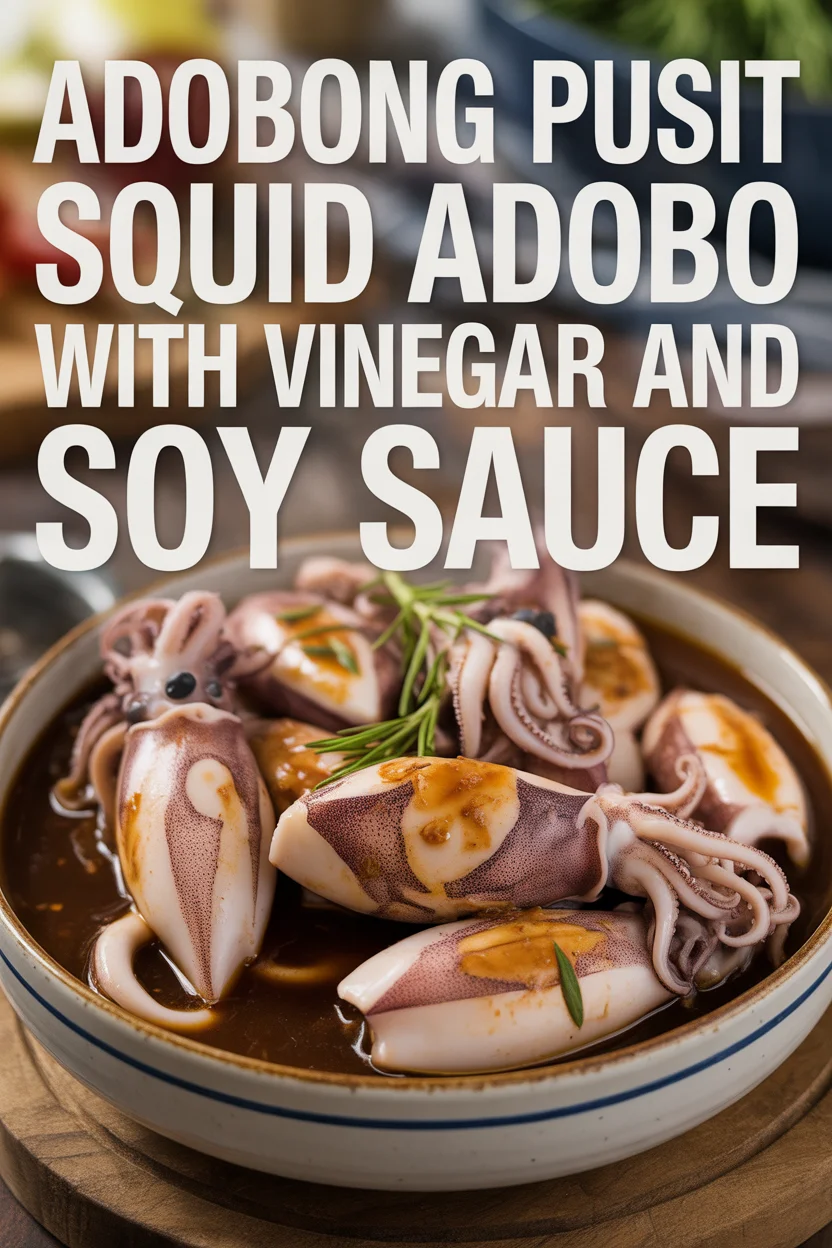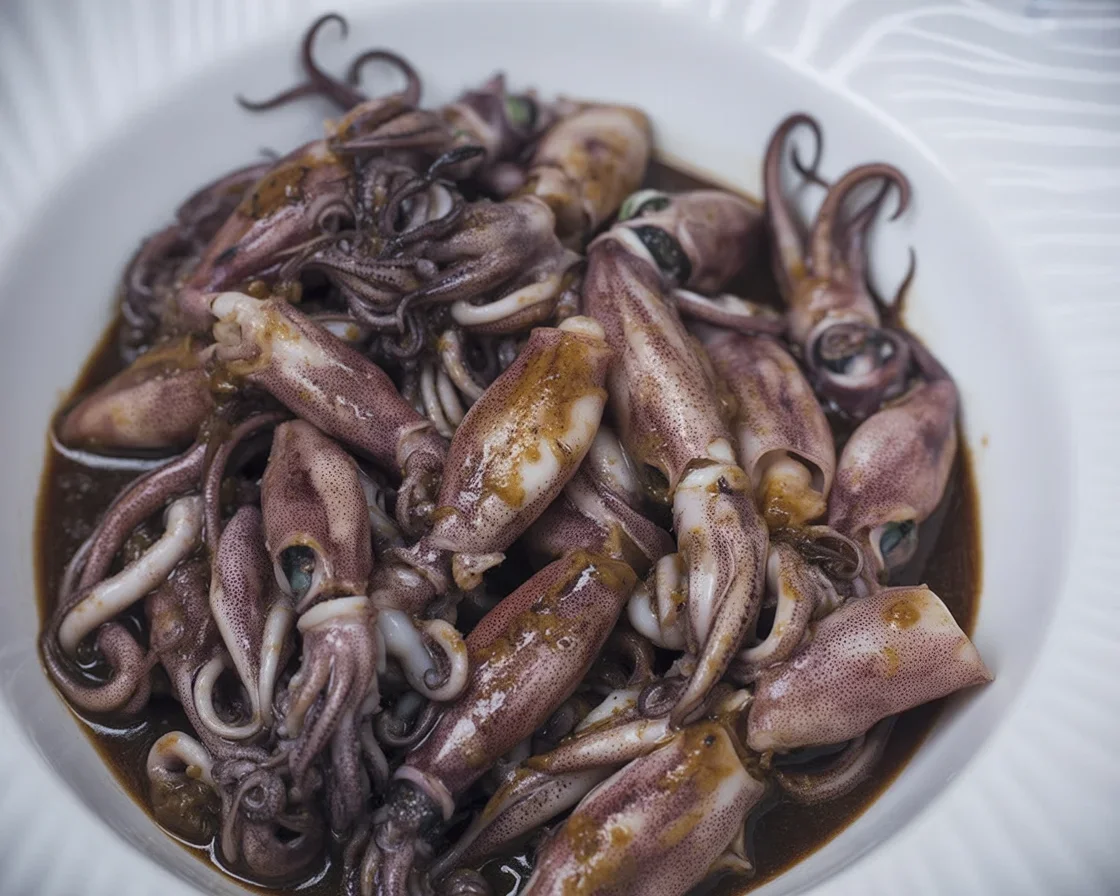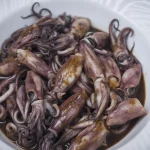- Introduction to adobong pusit
- Cleaning squid
- Cooking with vinegar and soy sauce
- Adding aromatics
- Serving hot
- Pairing with rice
- Flavor tips
- Common Questions
- Dive Into Squid Goodness Tonight!
Filipino adobong pusit is my secret weapon for lazy weeknight dinners (or when I’m just flat out craving something tangy and totally unique). Ever poked around your fridge, hungry for something that’s not chicken-but-still-simple? This hits that spot, trust me. Oh, it’s not your average adobo. Nope, give it a shot and you get punchy squid flavor soaked in vinegar and soy sauce magic. Plus—let’s be honest—we all deserve a break from plain meat stews. Need more ideas and twists for Filipino adobo? Check out these wicked adobo variations or peek at these kid-friendly Filipino recipes if you want to please the picky eaters, too.

Introduction to adobong pusit
Alright, down to the basics! Adobong pusit is a Filipino classic. It’s basically squid simmered in—wait for it—vinegar and soy sauce. You get that familiar adobo flavor but with a little ocean twist. Growing up, I thought it looked kind of intimidating (I mean, inky black sauce? What?), but man, all it takes is one taste. There’s a reason adobo has a million forms in the Philippines, and this one is a top contender for “best eaten with rice in your pajamas.” Nobody’s judging. If you’ve had pork or chicken adobo forever and wanna roll the dice, let this recipe surprise you.
One fun thing about adobong pusit is how ridiculously fast it cooks. We’re talking less than 20 minutes and dinner’s up. Not bad for something that looks five-star restaurant level. And yeah, you get to brag to everyone later that you made squid adobo.
“I never thought I’d like squid until I tried this! It’s so easy and just explodes with flavor. Even my kids go nuts for it now.” – Lara F., San Diego

Cleaning squid
Oh boy, cleaning squid can feel a bit, erm, weird if it’s your first time. But honestly, it’s not rocket science. You grab your squid, gently pull the head and tentacles from the body (careful, sometimes that ink sack wants to burst), and take out the clear plastic-y spine feeling thing inside. Weirdest part? Maybe. But it’s kind of fun.
Also, rinse out any gunk inside—sandy bits are definitely not welcome at my table. Leave the ink sack if you can; that black stuff, as bizarre as it looks, is flavor gold for this dish. I usually just snip the tentacles and chop the tube into rings, done and dusted. If you’re ever in a pinch and only have the frozen cleaned squid, don’t sweat it! Those work, too. Save yourself some stress and keep paper towels ready because things get slippery. No shame.

Cooking with vinegar and soy sauce
Here’s the part where adobong pusit gets real. Toss your well-drained squid in a frying pan (skip the fancy cookware, this isn’t a French bistro), add some vinegar and soy sauce, and boom—instant flavor. This pairing is peak Filipino home cooking.
Vinegar’s sharpness meets the salty bite of soy and the squid kind of soaks in everything. Don’t stir it just yet after adding vinegar. Let it simmer a bit—some Lola wisdom right there. Stir too soon, and you miss out on the best tang. Ten minutes on medium heat, tops. You’ll notice the ink turning the sauce inky-black—that’s when you know things are moving. No need to overcook the squid unless you enjoy chewing like rubber tires. My vote: tender is always better.
Adding aromatics
Let’s talk about what makes adobong pusit smell like heaven. Aromatics are musts—garlic (I go wild with at least 6 cloves), a heap of onions, cracked black pepper. Bay leaf? If you’re feeling fancy.
I usually fry the garlic and onion first to make them sweet and mellow. Then drop in the squid. Some folks throw in a bit of chili for kicks, which I swear wakes up the whole house. (Seriously, my cousin came running down the hall asking, “What’s that smell?”) Adding some ginger is optional, but it’s awesome for a little heat and zing. The combo lifts the ocean-y flavor, so things don’t get…well…too fishy. Find your favorite blend. Experiment! That’s half the fun if you ask me.
Serving hot
Now, I know some folks like to wait but, in my opinion, adobong pusit is best fresh outta the pan. Steam’s coming up, and it’s all glossy and shiny. You don’t want to muck about letting it sit. Invite your hungry crew to the table fast as you can—or it’ll vanish before you blink.
If you’ve made too much (rare, but hey, maybe you’ve got a small army at home), pop leftovers in the fridge. They reheat fine, but honestly, nothing beats freshly cooked squid. By the way, don’t worry if the inky sauce seems dark—it’s supposed to be bold and dramatic! If you have picky kids and want other tried-and-tested Filipino dishes, drop by here for a few healthy Filipino meals that work for the whole clan.
Serving Suggestions:
- Heap up on fluffy white rice. You’ll want every drop of that sauce.
- Squeeze a little calamansi or lemon over the top, trust me.
- Pair with a cold drink. Ice-cold cola or even an icy beer (if you’re an adult, that is).
Pairing with rice
Let’s be honest, adobong pusit with rice is a match made in, well, the Filipino kitchen kind of heaven. The sauce soaks in, turning plain rice into something special. Sticky rice or jasmine both work. I’ve tried brown rice. Eh, it’s healthier, sure, but white rice just feels right for this dish.
If you want to go big, make up some garlic fried rice on the side. Your tastebuds will thank you, I swear. This is a dish where you’ll want to lay off the utensils and just scoop with a spoon like you mean it. (Look, everyone does that at home.)
The crazy part? Leftover sauce is killer over fried eggs or even as a drizzle on roasted veggies. Don’t waste it. You heard it from me.
Flavor tips
Alright, now we’re at the “make it yours” section. Squid is delicate so don’t go wild overcooking. If your adobong pusit tastes too sour? Add a pinch of sugar—seriously, just a pinch makes a world of difference.
Feeling adventurous? Swap in coconut milk for part of the sauce for a creamier twist. My uncle once dumped in a bit of pineapple juice by accident and now swears he invented a new classic. (Can’t say that’s totally wrong.)
Truth? No two families do adobong pusit quite the same. Don’t be shy to double the garlic or add that one oddball ingredient that makes you happy. The only real rule is: taste as you go.
Common Questions
How do I stop my squid from turning tough?
Easy! Cook really quick on medium heat. As soon as the meat turns opaque, you’re good. Overcooking is the enemy here.
Do I need to keep the squid ink?
Yes, if you can—makes the sauce epic. But if you’re not a fan or it grosses you out, leave it out. Still good.
Can I use frozen squid?
Totally. Thaw and pat dry before cooking. Sometimes it’s even easier than fresh if you’re in a rush.
Is it safe for kids?
Mine eat it up! You might want to skip fresh chili if they hate spicy food. Otherwise, kids love the tender rings.
What’s the best rice to serve with it?
Can’t beat plain steamed white rice, but garlic sinangag is something you’ll crave again and again.
Dive Into Squid Goodness Tonight!
Who said squid can’t be simple, satisfying comfort food? This adobong pusit will change your mind about classic Filipino meals, especially if you’re a fan of flavors that kinda smack you awake. Whether you learned all about adobo from a parent or want a new twist, this is it—bold, easy, and a little wild. Curious for step-by-step visuals and authentic takes? I swear by this Adobong Pusit Recipe. For another spin, check out Adobong Pusit – Foxy Folksy and see how other fans make it their own, or dive into Adobong Pusit – Ang Sarap for region-by-region style. Trust me, give it a go and let your dinner table light up for a change!

Adobong Pusit
Ingredients
Main Ingredients
- 1 pound squid Cleaned and cut into rings
- 1/2 cup vinegar Preferably cane vinegar for authentic flavor
- 1/4 cup soy sauce Use low-sodium if preferred
Aromatics
- 6 cloves garlic Minced
- 1 medium onion Chopped
- 1 leaf bay leaf Optional for added flavor
- 1 teaspoon cracked black pepper To taste
- 1 teaspoon ginger Optional, for a little heat and zing
Instructions
Cleaning the Squid
- Gently pull the head and tentacles from the squid body and remove the spine.
- Rinse the squid to remove any sandy bits; trim the tentacles and cut the body into rings.
Cooking the Squid
- In a frying pan, combine the cleaned squid, vinegar, and soy sauce.
- Allow the mixture to simmer on medium heat for about 10 minutes without stirring.
- Watch for the ink to color the sauce as it cooks.
Adding Aromatics
- In a separate pan, sauté minced garlic and chopped onion until sweet and translucent.
- Add the cooked squid to the pan with garlic and onion.
- Optionally, add chili and/or ginger for extra flavor.
Serving
- Serve adobong pusit hot over fluffy white rice.
- Garnish with a squeeze of calamansi or lemon if desired.

